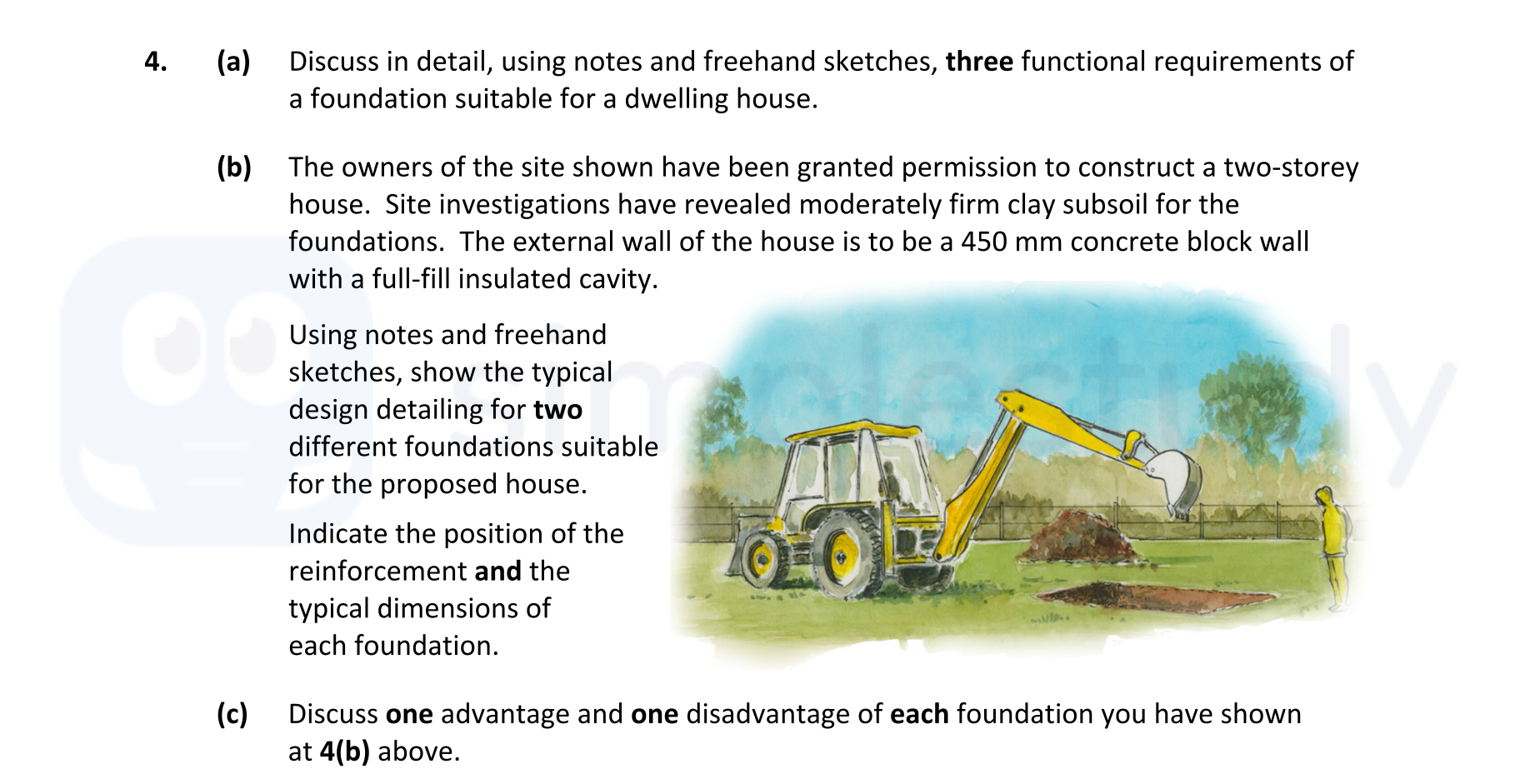Photo AI
4. (a) Discuss in detail, using notes and freehand sketches, three functional requirements of a foundation suitable for a dwelling house - Leaving Cert Construction Studies - Question 4 - 2022
Question 4

4. (a) Discuss in detail, using notes and freehand sketches, three functional requirements of a foundation suitable for a dwelling house. (b) The owners of the site... show full transcript
Worked Solution & Example Answer:4. (a) Discuss in detail, using notes and freehand sketches, three functional requirements of a foundation suitable for a dwelling house - Leaving Cert Construction Studies - Question 4 - 2022
Step 1
Discuss in detail, using notes and freehand sketches, three functional requirements of a foundation suitable for a dwelling house.
Answer
Functional Requirements of a Foundation
Foundations serve as crucial structural elements in buildings, ensuring safety, stability, and durability. The three primary functional requirements include:
1. Load Distribution
Foundations must safely distribute all live loads (e.g., people, furniture) and dead loads (e.g., building weight) evenly across the ground. This prevents localized stress on the soil, ensuring that the structure does not settle unevenly.
2. Resistance to Environmental Forces
Foundations must anchor the structure against various environmental forces such as wind and weather. They should withstand horizontal forces and oscillations, thereby maintaining structural integrity over time.
3. Prevention of Settlement
Foundations should limit the amount of settlement or subsidence that occurs as the soil consolidates. This is essential to avoid structural damage or deformation of the building over its lifespan.
Step 2
Using notes and freehand sketches, show the typical design detailing for two different foundations suitable for the proposed house. Indicate the position of the reinforcement and the typical dimensions of each foundation.
Answer
Foundation Design Details
Option 1: Strip Foundation
- External Thickness: 450 mm
- Depth: 600 mm
- Minimum Depth Below Ground Level: 1000 mm
- Typical Reinforcement:
- Steel welded mesh (10 mm)
- Longitudinal bars and transverse bars of steel
- Steel stirrups used for rigidity

Option 2: Passive Half-Insulated Foundation
- Subsoil Excavation: Depth of 1000 mm
- Hardcore Layer: 100 mm clean, filled in layers of 225 mm and compacted
- Insulation: Rigid EPS 300 mm thickness
- Reinforcement at Base: Steel bars as per engineer specifications

Step 3
Discuss one advantage and one disadvantage of each foundation you have shown at 4(b) above.
Answer
Advantages and Disadvantages
Strip Foundation
- Advantage:
- Well understood construction method, requiring no specialized training, making it easier for contractors.
- Disadvantage:
- Requires extensive excavation and leads to higher embodied energy and CO2 emissions due to cement production.
Passive Half-Insulated Foundation
- Advantage:
- Minimal excavation reduces environmental impact and lowers embodied energy.
- Disadvantage:
- Requires specialized training for installation and carries a higher cost associated with specific detailing.
